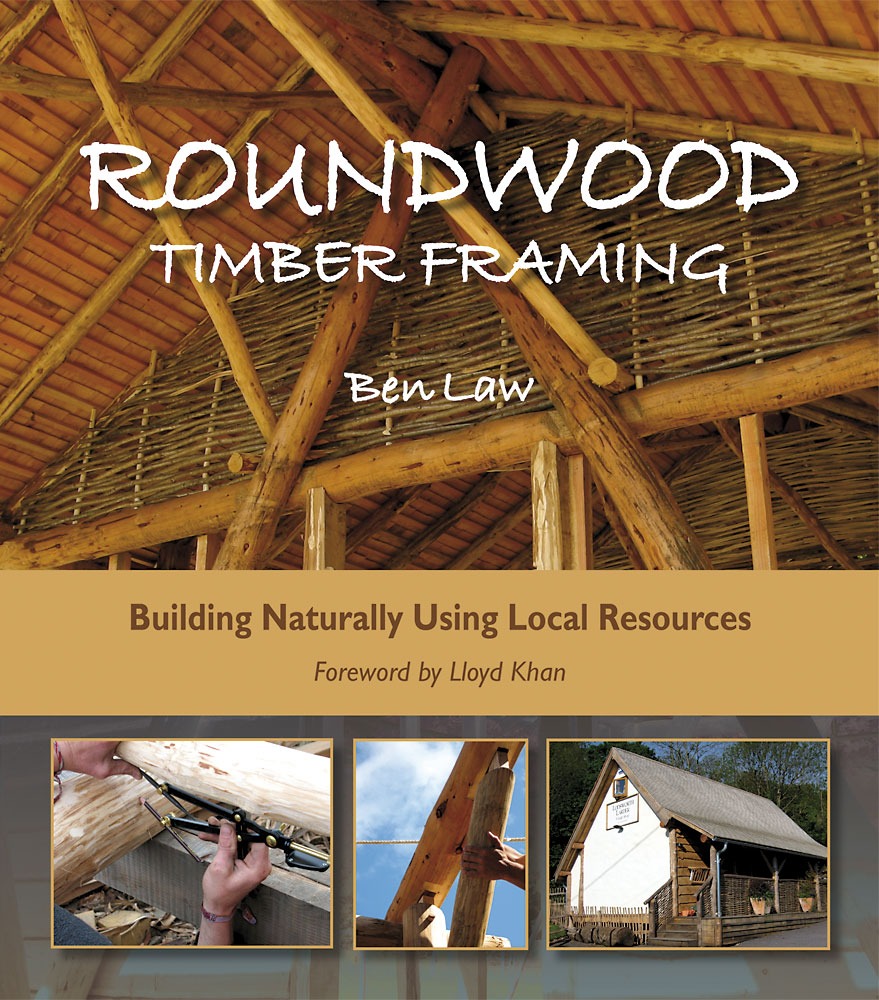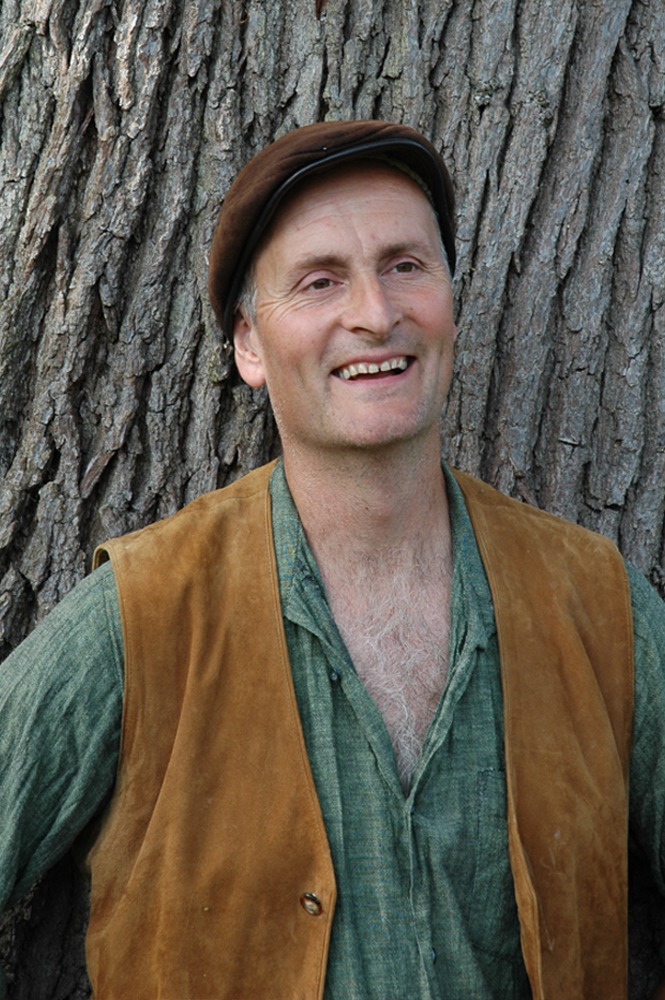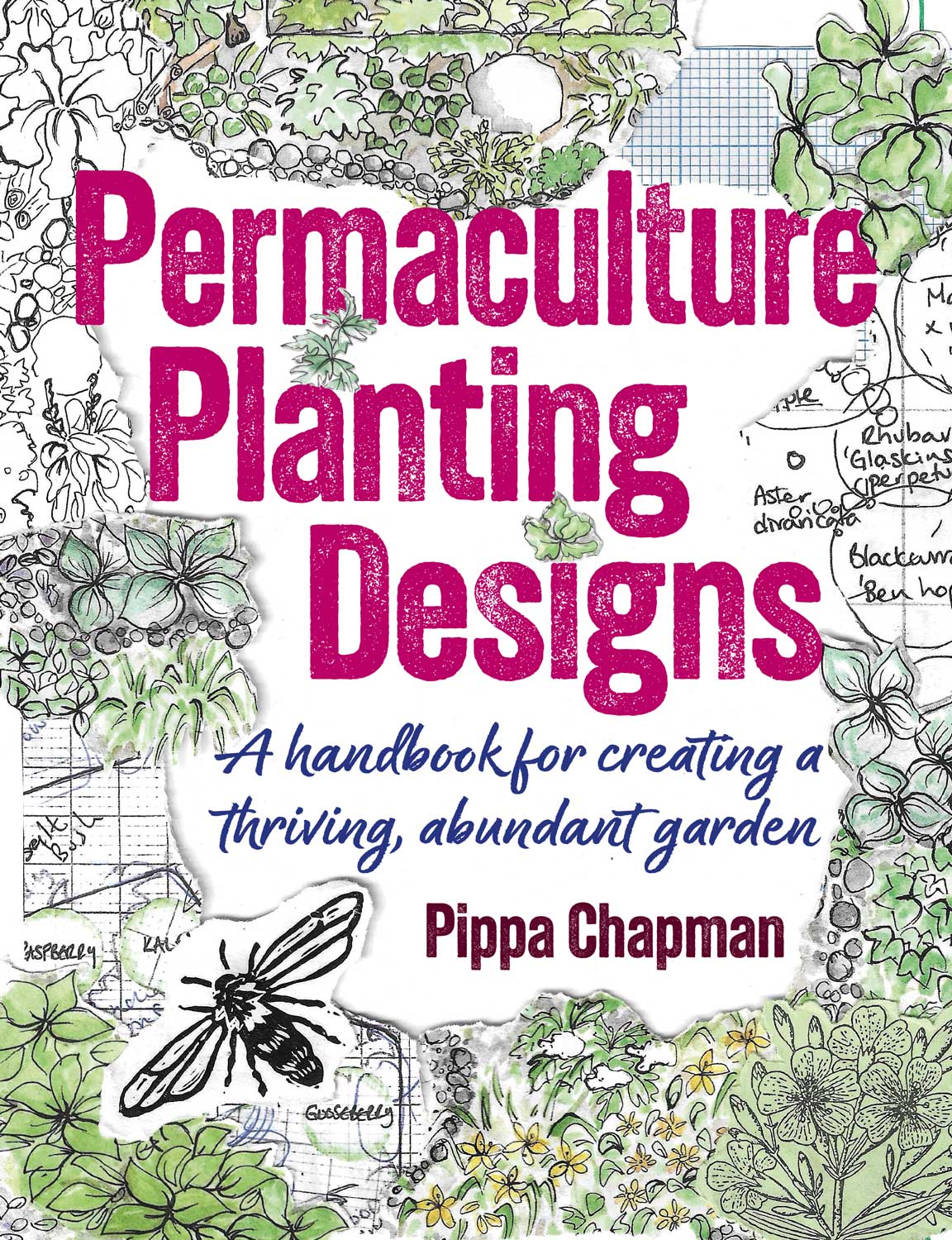
Since building his famous Woodland House from his own woodland, author Ben Law has evolved his own style of natural building, now tried and tested on many other builds across England. Ben has built houses, workshops, a classroom, lean-tos, a shop and a store to industrial specifications. Whilst this style’s origins can be found in traditional forms of building, Ben has developed an entirely new vernacular using many innovative ideas and techniques.
Filled with detailed colour photographs and drawings, this unique and practical ‘how to’ book, is unquestionably a benchmark for sustainable building. Roundwood Timber Framing encourages communication between woodsmen, planners, architects and builders, and helps to close the loop between environmental conservation, use of renewable local resources and the regeneration and evolution of traditional skills, to create durable, ecological and beautiful buildings.
Ben is a now a much admired figure. His previous books have sold extremely well and this book, with its highly original and fascinating contribution to design and build, is set to capture the public’s imagination and desire to increasingly learn traditional crafts.
“Ben’s work is unique… He’s a 21st century woodsman, formulating a new building style based on the timber framing methods of his British ancestors, but incorporating new techniques and the realities of the present-day world.”
Lloyd Kahn, author of Shelter: Homework and Builders of the Pacific Coast
Book Details
Published: 2010
ISBN: 978 1 85623 330 9
Size: 250mm x 220mm
Format: Hardback, 168pp. 400 colour photographs
Author

Ben Law has always had a passion for healthy, biodiverse farms and woodlands. He previously worked on a smallholding; growing fruit and vegetables and looking after livestock. Having gained an Advanced National Certificate in Agriculture, Ben became a shepherd and set up a conservation landscaping business, specialising in ponds and wild flower meadows. Woodlands were a natural progression and, after seeking out a few experienced coppice workers, he began work in the woods and in associated coppice crafts.




